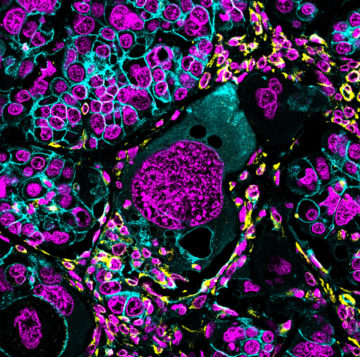Elizabeth Pennisi in Science:

When Vicki Losick got her Ph.D. and joined a fruit fly lab at the Carnegie Institution for Science in 2008, its head announced that he expected his postdocs to launch new fields of inquiry. She chose a then-fashionable focus: stem cells, versatile cells that specialize into other cell types and play critical roles in embryonic development and the renewal of adult tissues. Losick wondered whether they also help in wound repair. So, she and another postdoc, Don Fox, began stabbing fruit flies with a tiny needle, hoping to document stem cells coming to the rescue.
Instead, the two postdocs, working independently, saw other cells near the wounds behaving oddly. The cells grew and prepared to divide by duplicating their DNA. Then they stalled, each remaining a single, enlarged cell with multiple copies of its genome. “I was shocked,” recalls Losick, now at Boston College. When she and Fox looked at the fly wound sites a few days later, they saw signs that these so-called polyploid cells, and not stem cells, were the major wound healers. At the puncture site, supersize cells with multiple nuclei quickly closed up the wound. “Simultaneously we found the same thing [and it] had nothing to do with stem cells,” Fox recalls.
More here.
